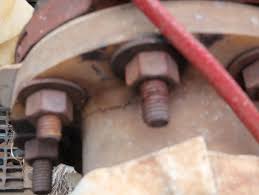Years ago I took a call from the supervisor of an installation crew who was installing FRP pipe we manufactured. I could tell from the background noise he was in the field working with his team. And he was upset; I mean he was livid. He’d just discovered that most of the first dozen or so FRP flanges his crew had bolted up were cracked. And he was looking to pin the blame on the manufacturer of those flanges.
While I had him on the phone, I quickly looked at our QC documents. All spools had passed with almost no re-work. And I had a lot of confidence in my fabricating team and in-house QA inspector. So I started asking questions:
Is this installation job going worse than the last FRP pipe installation his crew did? “First time installing FRP pipe.” Red Flag #1.
What tools are the crew using to tighten the bolts? “Impact wrenches”. Red Flag #2
Has this crew installed steel pipe in the past? “No, new crew from a temp agency”. Red Flag #3
There were more questions but you can see where this is going. After further discussion, he acknowledged that his installation team had not followed the correct procedures. But, while I could rush replacement flanges to him, they could only be installed on the pipe ends by a crew that had been trained properly. This was going to cost him money and a delayed installation.
Here’s two photos of FRP flanges that cracked from improper installation during two other projects. The discoloring is due to the chemical attack from the leaked liquid.
Properly installing FRP flanges is easy when you know the procedure. End users might have their own site procedures and requirements but installers should always request the information (if it wasn’t provided to you) by the equipment manufacturer.
One procedure that is often used is to tighten each nut until it makes contact with the flange, then follow the proper bolting pattern (such as a star pattern) to tighten to 25% of the torque specification. Then follow the bolting pattern to reach 50% of torque spec, follow the bolting pattern to 75% of torque spec, and finally follow the bolting pattern to 100% of torque spec (not a bit more!). Ratchet wrenches are OK, but not impact wrenches.
But again, consult the procedure for each project and piece of equipment.
For more information, please contact diamondfiberglass.com


Recent Comments